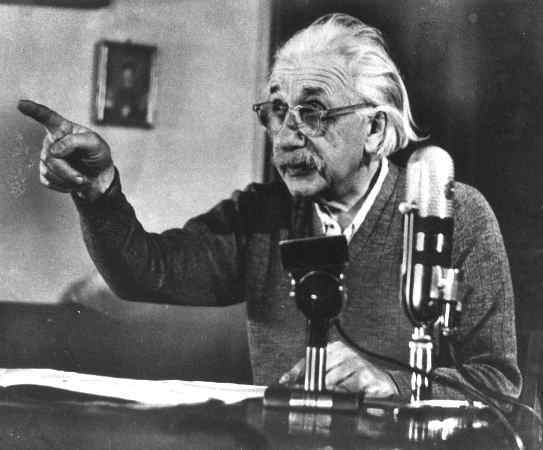Theory of Relativity in the Real World: GPS

People often ask me: “Why is the theory of relativity so good?”. Usually, it is thought of as some kind of abstract, mystical mathematical theory, in no way connected with everyday life. In fact, this is not the case.
Imagine for a moment that you are flying in a commercial airliner, the pilot and crew of which direct the plane to its destination using the Global Positioning System (GPS). Moreover, many expensive cars now come with built-in navigation systems, including GPS-receivers with digital maps, and you can buy a pocket GPS-navigator that will show your location (latitude, longitude, height) with an accuracy of 5 to 10 meters, weigh only a few ounces and cost about a hundred dollars.
')
GPS was developed by the United States Department of Defense to provide US Army satellite navigation. Later, it was transferred under the joint control of the Ministry of Defense and the Ministry of Transport for use both for military and civilian purposes.
The current GPS configuration consists of 24 satellites orbiting the Earth in high orbits. Each satellite in the GPS constellation flies at an altitude of about 20 thousand kilometers above the earth, its orbital speed is about 14 thousand kilometers per hour (the orbital period is about 12 hours - contrary to popular belief, GPS satellites are not in geosynchronous or geosynchronous orbits). The orbits of the satellites are distributed so that at any given time at least four satellites are visible from any position on Earth (up to 12 satellites can be seen at a time). Each satellite carries an atomic clock on its board that “ticks” to within one nanosecond (one billionth of a second). A GPS receiver in an airplane determines its current position and direction by comparing time signals received from different GPS satellites (usually from 6 to 12) and trilateration on the current position of each of the satellites. This achieves remarkable accuracy: even a simple pocket GPS receiver can determine your absolute position relative to the Earth’s surface with an accuracy of 5 to 10 meters in just a few seconds (using differential techniques comparing two nearby receivers, accuracy of the order of centimeters or millimeters in relative position is often are reached within an hour or so). A GPS receiver in a car can receive accurate position, speed and direction values in real time!
To achieve this accuracy, time signals from GPS satellites must be known with an accuracy of 20-30 nanoseconds. However, due to the constant motion of satellites relative to the observer on Earth, to achieve the desired 20-30 nanoseconds of error, it is necessary to take into account the effects predicted by the general and special theory of relativity.
Since the observer on earth sees satellites in motion, the special theory of relativity (SRT) states that we should see that their clocks are ticking more slowly (see the lecture on SRT ). The SRT says that the onboard atomic clocks on satellites should be delayed by about 7 microseconds per day compared to the Earth because of the lower speed due to the relativistic time dilation.
In addition, the satellites are in orbits at a great distance from the Earth, where the curvature of space-time due to the mass of the Earth is less than on the earth's surface. The forecast of the general theory of relativity (GTR) is that the clock, closer to a massive object, will appear slower than those that are farther from it (see the lecture on black holes ). In fact, being observed from the earth’s surface, clocks on satellites seem to be faster than similar clocks on earth. Calculations based on GRT show that the clock on each GPS satellite should be rushed relative to the Earth’s for 45 microseconds per day.
The combination of these two relativistic effects means that the clocks onboard each satellite must go faster than the analogous clocks on earth for about 38 (45 - 7 = 38) microseconds per day! Sounds like a small amount, but the high accuracy required by the GPS system requires nanosecond errors, while 38 microseconds are 38 thousand nanoseconds. If these effects were not taken into account, the coordinates calculated on the basis of the cloud of GPS satellites would be incorrect after two minutes, and errors in global locations would continue to accumulate at a speed of about 10 kilometers per day! The entire system would be completely unsuitable for navigation after a very small amount of time. This type of cumulative error is akin to finding my location when I stand on the porch of my house in Columbus, Ohio, on the same day, and when I do the same search a week later, my GPS receiver would tell me that I was on my porch and I'm about 5,000 meters above Detroit.
The engineers who designed the GPS included these relativistic effects in their calculations during the design and deployment of the system. For example, to neutralize the effect described by GR, they slowed down the atomic clocks before launching them, so that if they were in their orbits, they would go at the same speed as the reference atomic clocks at ground stations GPS. In addition, a microcomputer is built into each GPS receiver, which (among other things) performs the necessary relativistic calculations at the time of determining the user's location.
Relativity is not just some abstract mathematical theory: understanding it is a necessary condition for GPS to work properly!
Source: https://habr.com/ru/post/230117/
All Articles